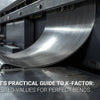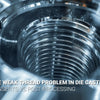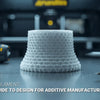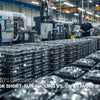5-Axis vs 3-Axis Cost Comparison: When Does 50+ Order Volume Justify the Upgrade?
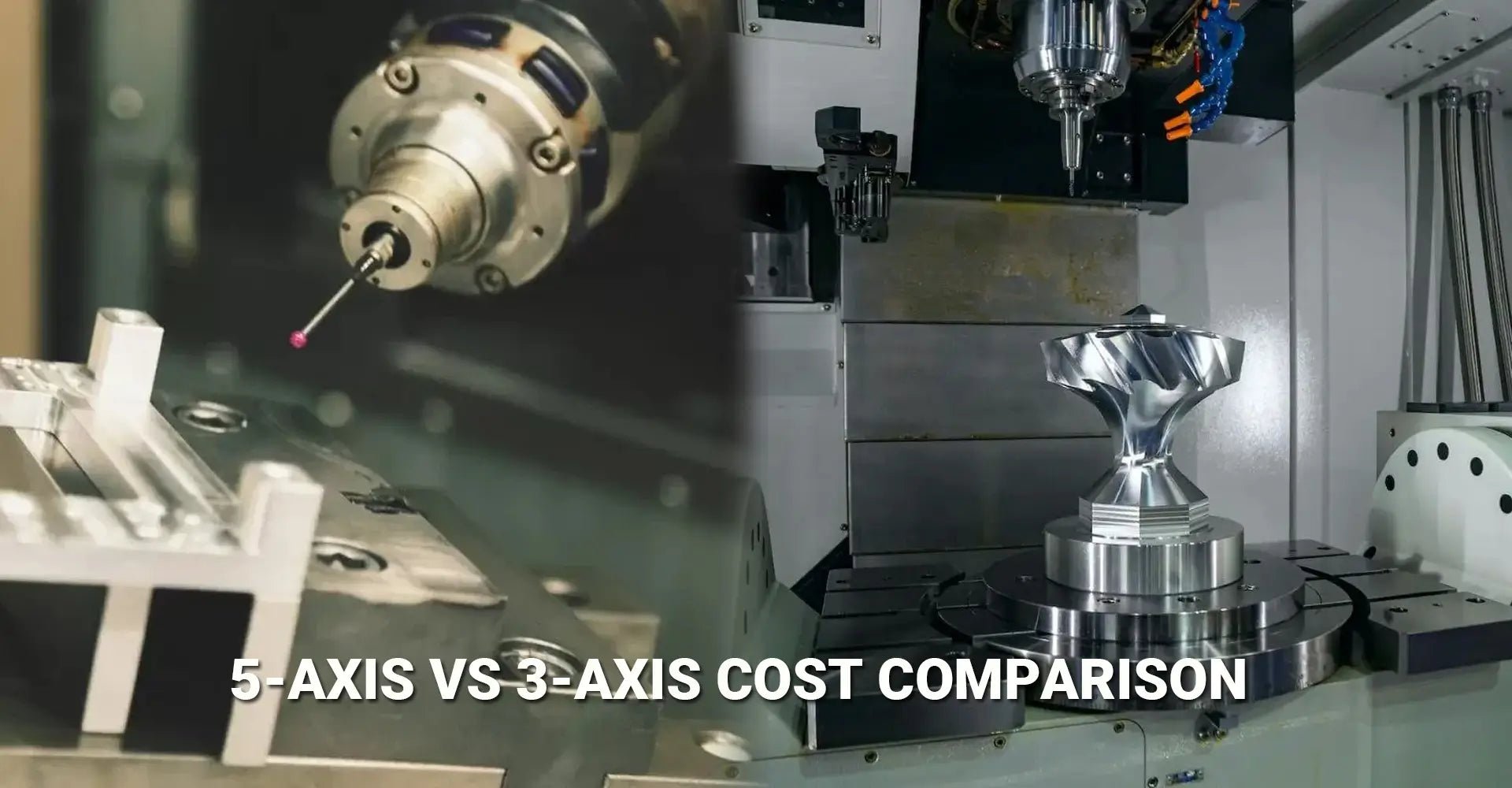
5-Axis vs 3-Axis Cost Comparison: When Does 50+ Order Volume Justify the Upgrade?

Turbine housing manufacturers face a critical decision that impacts both production costs and delivery timelines. Moreover, choosing between familiar 3-axis machining and advanced 5-axis technology requires careful analysis of economic factors. Furthermore, with documented cycle time improvements and precision capabilities, 5-axis machining promises significant advantages for complex parts. However, the economic break-even point remains unclear for many manufacturing facilities. Therefore, this comprehensive analysis reveals exactly when 5-axis investment delivers measurable returns on investment.
Quick Answer: The 5-axis vs 3-axis cost comparison shows that 5-axis machining becomes cost-effective at 50+ turbine housings. Additionally, it reduces per-unit costs from $220 to $180 while achieving superior precision. Furthermore, the key factors include deep cavity requirements, batch size specifications, and tolerance demands that determine the optimal machining approach.
Understanding the true cost implications requires examining real-world production data from turbine housing manufacturing. Therefore, let's dive into the specific scenarios where 5-axis technology delivers measurable ROI. Moreover, we'll explore the technical and economic factors that influence this critical investment decision.
Table of Contents
- Why Do 3-Axis Setups Struggle with Complex Turbine Housings?
- How Does 5-Axis Achieve 40% Faster Cycle Times?
- What Makes 50 Units the Economic Break-Even Point?
- Which Part Geometries Require 5-Axis Machining?
Why Do 3-Axis Setups Struggle with Complex Turbine Housings?
Traditional 3-axis machining faces significant challenges when producing turbine housings with deep cavities and curved surfaces. Furthermore, multiple setups create opportunities for error accumulation and extended cycle times. Additionally, the limitations become more apparent when dealing with complex geometries that require precise tool access angles.
Key Challenge: 3-axis turbine housing production requires 4 separate setups, resulting in 12-hour cycle times. Moreover, this approach leads to ±0.05mm tolerance variability due to repositioning errors that accumulate throughout the machining process.
The fundamental limitation stems from 3-axis machines' inability to access complex geometries without repositioning. Additionally, each setup introduces thermal drift and fixture alignment errors that compromise final part quality. Furthermore, deep cavity machining requires special attention, as tool access becomes restricted. Consequently, this forces the use of longer tools that flex under cutting forces. Therefore, the result includes surface finish inconsistencies and dimensional drift across the part. Moreover, operators must manually reposition workpieces multiple times, increasing labor costs and introducing human error factors. Professional CNC machining services understand these limitations and often recommend alternative approaches for complex geometries.
How Does 5-Axis Achieve 40% Faster Cycle Times?
5-axis technology eliminates the repositioning bottleneck through continuous toolpath strategies and simultaneous multi-axis motion. Furthermore, this approach transforms turbine housing production from a multi-setup process to a single-setup operation. Additionally, the 40% cycle time reduction in CNC operations comes from eliminating setup changes and improving tool access.
Performance Breakthrough: Single-setup 5-axis machining reduces turbine housing cycle time to 7.2 hours. Moreover, it maintains ±0.01mm precision CNC machining through integrated probing systems that provide real-time feedback throughout the process.

The cycle time reduction comes from three key factors that work together seamlessly. First, elimination of setup changes removes time-consuming repositioning operations. Second, continuous toolpath optimization allows for smoother material removal. Third, improved tool access angles enable better cutting conditions. Furthermore, trochoidal milling becomes possible on curved walls, reducing cutting forces while maintaining high material removal rates. Additionally, the integrated probing system provides real-time dimensional feedback, ensuring consistent precision throughout the machining cycle. Therefore, manufacturers can achieve superior results with reduced operator intervention. Moreover, deep cavity machining with 5-axis technology allows access to previously unreachable areas without compromising surface quality. This capability is particularly valuable for industrial machinery components that require complex internal geometries.
What Makes 50 Units the Economic Break-Even Point?
The 5-axis investment decision hinges on understanding the true cost per unit across different batch sizes. Furthermore, while initial tooling costs are higher, per-unit savings become significant at specific volume thresholds. Additionally, order volume optimization for complex parts requires careful analysis of both fixed and variable costs.
Cost Analysis: 3-axis production costs $220/unit including labor and fixtures. In contrast, 5-axis costs $180/unit with amortized tooling expenses. Therefore, break-even occurs at 50 units where cumulative savings offset the $8,000 tooling investment required for 5-axis setup.
The calculation reveals why 50 units represents the critical threshold for investment decisions. Specifically, ($220 - $180) × 50 = $2,000 net savings after tooling costs are considered. Furthermore, beyond this point, each additional unit generates $40 in direct cost savings. Moreover, labor cost reductions come from eliminated setup time and reduced manual handling. Additionally, improved surface finish reduces secondary operations and inspection requirements. The analysis assumes standard supplier rates and can be customized based on regional variations. Therefore, manufacturers should consider their specific production volumes when making this investment decision. Furthermore, companies offering rapid prototyping services often find that 5-axis capabilities justify investment even at lower volumes due to the complexity premium.
Which Part Geometries Require 5-Axis Machining?
Specific geometric features serve as clear indicators for 5-axis adoption in manufacturing operations. Furthermore, understanding these triggers helps manufacturers make informed investment decisions based on their part portfolio. Additionally, certain geometries simply cannot be efficiently produced using traditional 3-axis methods.
Geometry Checklist: Undercuts with >6:1 length-to-diameter ratios require 5-axis access for proper machining. Moreover, multi-directional curves, tolerances <0.02mm, and deep pockets with depth >5× width all justify 5-axis investment for cost-effective production.
The decision matrix considers five critical factors that determine the optimal machining approach. First, pocket depth ratios indicate when conventional tools cannot reach required areas. Second, surface curvature complexity determines whether continuous toolpaths are necessary. Third, tolerance requirements specify the precision level needed for successful production. Fourth, undercut accessibility shows when multi-axis motion becomes essential. Fifth, multi-directional machining needs indicate when part geometry exceeds 3-axis capabilities. Furthermore, parts requiring 4+ setups on 3-axis equipment typically benefit from 5-axis conversion. Additionally, deep pockets become particularly challenging when depth exceeds 5 times the width, as tool deflection compromises accuracy. Moreover, compound curves with varying normal vectors cannot be efficiently machined with 3-axis linear interpolation. This turbine housing machining case study demonstrates how complex geometries drive the need for advanced machining capabilities. Manufacturers working with various CNC metals and plastics often find that material properties combined with complex geometries make 5-axis machining the only viable option for achieving required specifications.
An interactive machining process selector can help manufacturers determine the optimal approach based on their specific part requirements. Therefore, inputting geometry parameters, tolerance specifications, and batch sizes provides customized recommendations for machining strategy selection.
Conclusion
Making the Right Investment Decision
The choice between 3-axis and 5-axis machining for turbine housings depends on three key factors that determine economic viability. First, batch size directly impacts the cost per unit through fixed cost amortization. Second, part complexity determines whether 3-axis capabilities are sufficient for required geometries. Third, precision requirements specify the tolerance levels that must be achieved consistently. Furthermore, at 50+ units, the economic case becomes clear with $40/unit savings and documented cycle time improvements. However, the decision should also consider part geometry complexity and tolerance specifications beyond simple volume calculations. Additionally, manufacturers producing complex turbine housings with deep cavities and tight tolerances will find 5-axis technology delivers immediate benefits regardless of batch size. Moreover, the investment pays dividends through improved quality consistency and reduced secondary operations. Therefore, careful analysis of these factors ensures optimal manufacturing strategy selection for long-term profitability and competitive advantage.
External Links Recommendation
[5-axis vs 3-axis cost comparison][^1]
[turbine housing machining][^2]
[economic break-even point for 5-axis upgrade][^3]
[deep cavity machining with 5-axis][^4]
[±0.01mm precision CNC machining][^5]
---
[^1]: Understanding the cost differences can help you make informed decisions about your machining investments.
[^2]: Exploring best practices can enhance your machining efficiency and product quality.
[^3]: Calculating the break-even point is crucial for assessing the financial viability of upgrading your equipment.
[^4]: Explore this link to understand how 5-axis machining enhances precision and efficiency in deep cavity machining processes.
[^5]: Discover techniques and technologies that enable achieving ±0.01mm precision in CNC machining, crucial for high-quality manufacturing.

